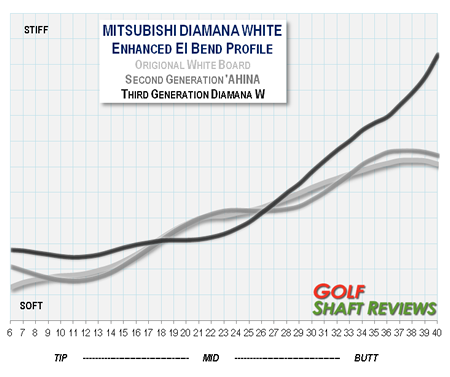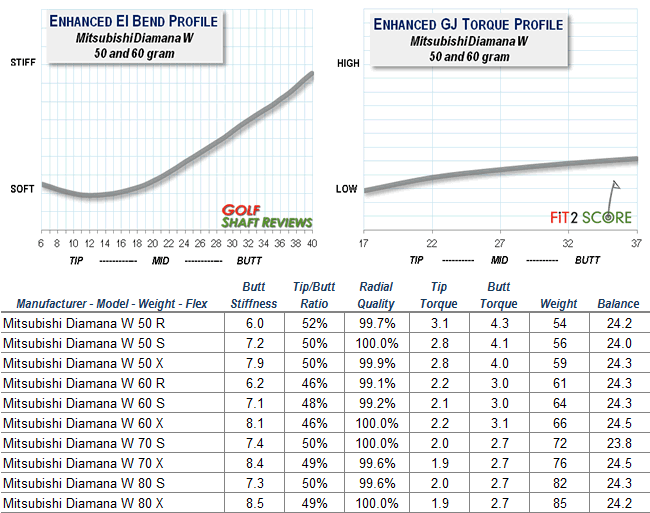OBAN DEVOTION DRIVER SHAFT
By Woody Lashen, A Golf Digest America’s 100 Best Clubfitter
Pete’s Golf, Mineola, New York
![]() The OBAN Devotion was one of the original shafts introduced by Oban. They come in 4 different weights plus a hybrid version. Designed to for mid launch and low spin; as with many shafts they vary in launch and spin as the weights change. As with all Oban shafts they do not use words for flex, they use a number system from 1-6 to designate flex. The 45 model ranges in weight from 46 t0 49 grams, and is offered in 1 to 4 flex. It runs much softer than the rest of the line with a very smooth feel and high launch high spin launch conditions. The 55 model is 53-59 grams and is available in 2-5 flexes. As the weight s starts to get heavier flex’s get stiffer and the launch and spin come down, the 55 is still a mid to high spin and launch shaft. The 65 version is 66-69 grams and available in 3-6 flex’s. It is one of the best mid 60 gram shafts for lowering spin while keeping the smooth feel of the devotion line. The 65 runs much stiffer then the two lower models, even for the highest loader of the shaft the 5 flex will be sufficient, in the many years of fitting this shaft we have not had the need to use the 6 flex in any of the versions of this shaft.
The OBAN Devotion was one of the original shafts introduced by Oban. They come in 4 different weights plus a hybrid version. Designed to for mid launch and low spin; as with many shafts they vary in launch and spin as the weights change. As with all Oban shafts they do not use words for flex, they use a number system from 1-6 to designate flex. The 45 model ranges in weight from 46 t0 49 grams, and is offered in 1 to 4 flex. It runs much softer than the rest of the line with a very smooth feel and high launch high spin launch conditions. The 55 model is 53-59 grams and is available in 2-5 flexes. As the weight s starts to get heavier flex’s get stiffer and the launch and spin come down, the 55 is still a mid to high spin and launch shaft. The 65 version is 66-69 grams and available in 3-6 flex’s. It is one of the best mid 60 gram shafts for lowering spin while keeping the smooth feel of the devotion line. The 65 runs much stiffer then the two lower models, even for the highest loader of the shaft the 5 flex will be sufficient, in the many years of fitting this shaft we have not had the need to use the 6 flex in any of the versions of this shaft.
The technical discussion and measurements are available only to registered readers
To continue reading this section of the review, you must be registered at a higher level membership.
Russ
To continue reading this section of the review, you must be registered at a higher level membership.
Russ



